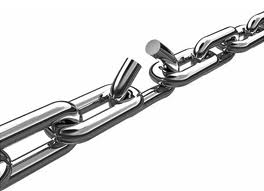Webinar Notes: Supply Chain Risk Mitigation
This week’s featured webinar notes are from an event hosted on Thursday by Supply and Demand Chain Executive, “Supply Chain Risk Mitigation: Minimizing Exposure To Supplier Failure, Volatile Commodity Prices, And Manufacturing Disruption’.
 Risk Segmentation
Risk Segmentation
At Buyers Meeting Point, we often cover events on risk because most supply management groups are still in the early phases of their risk assessment and mitigation growth curves. The unique angle this event provided was the segmentation of risk into ‘resting’ and ‘reactive’ risks.
- Resting risk is a part of doing business and includes supply bottlenecks, spend fragmentation, sole sourcing, buying critical components from a small group of suppliers, regulatory compliance, part changes, end of life notices, and counterfeiting.
- Reactive risk is event driven and can not be prevented. Unanticipated events such as natural disasters, political disruptions, and M&A activity require quick mitigation reactions despite the lack of notice.
Regardless of the type of risk, today’s landscape requires a multi-dimensional approach to risk assessment including supplier risk, materials risk, and electric component risk.
Counterfeiting becomes a particularly likely risk when demand for a part or component still exists after the part has become obsolete or when there are long lead times and parts are being allocated. Often, he counterfeit is not detected until after a problem is found and the damage is done, either in terms of reputation or warranty costs.
Effect of the Floods in Thailand
The flooding in Thailand in September 2011 was driven by a high monsoon season. 1/3 of Thailand was under water, 14,000 factories were out of commission. It was the third most costly natural disaster ever recorded (behind the Japanese earthquake and tsunami and hurricane Katrina. Hard disk drive manufacturing was particularly hard hit, experiencing a 30% drop in shipments and 28% price increases. These conditions had an indirect impact on the PC market, set top box market (e.g. DVRs), and the server market. From the perspective of the electronic supply chain, Thailand was worse than Japan. As of Q1 2012, inventory is improving. By Q3 2012 supply demand equilibrium is predicted, meaning that it took nearly a year to recover form the disruption.
Sometimes the result of supply chain disruption is not as simple as the initial shortages. A group of supply chain managers (surveyed by webinar sponsor IHS Research) were questioned about how they handled supply shortages after the March 2011 Japanese earthquake and resulting tsunami. Half of respondents indicated that they bought more raw components to boost inventory. This reaction may have caused shortages that would not otherwise have happened. 40% of respondents went to the open market (or the grey market) looking for product. In this uncontrolled environment, counterfeiting is a high probability.
Managing Supplier Risk by Improving Supplier Relationships
- It is important to segment your supply base and develop mutually beneficial relationships rather than going to battle with suppliers at each contract negotiation.
- The more ‘raw’ the product inputs are, the more volatile the contract will be.
- Focus should be placed on greater transparency and increased communications on a familiar level
- Many procurement groups are introducing a supplier relationship manager role to manage key partners. Once a contract is in place, category or parts managers may not have the skills required to effectively develop and maintain supplier relationships and maximize innovation/efficiency in production.
- Understand where partnerships are needed. This should not just be based on spend or volume, but recognize bottlenecks, and difficulty to replace
- Initial reaction to news such as the floods in Thailand require only basic information. Know where your suppliers’ facilities are so you can look up their locations on a map to see if a disruption is likely to affect you. Manufacturers may not be able to tell you (or get in contact with you) to let you know that there is going to be a problem.
- Price behavior has changed over the last 10-15 years, which necessitates tracking commodity processes, build detailed cost profiles for individual materials, and commodity risk analysis based on company and country. In some cases this may call for a formal hedging strategy.
When you subscribe to the blog, we will send you an e-mail when there are new updates on the site so you wouldn't miss them.